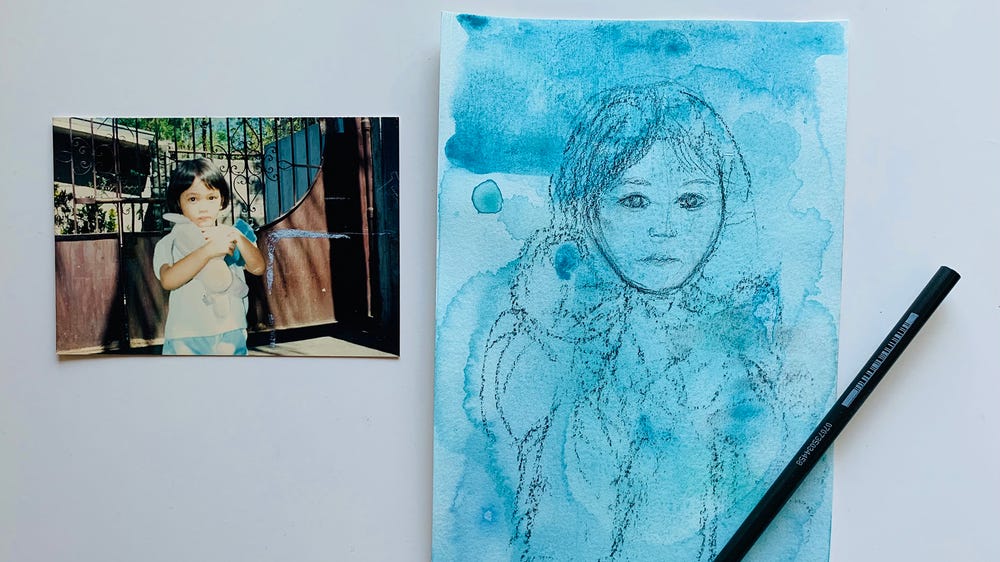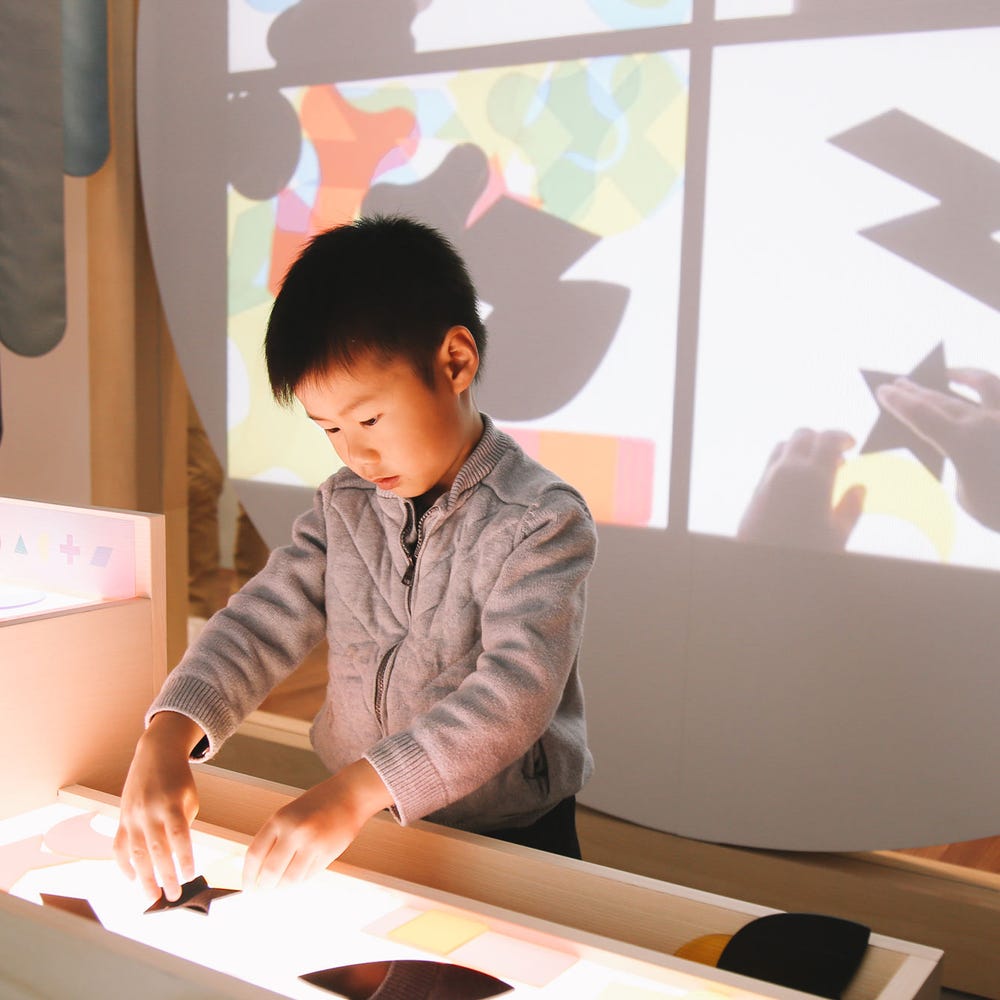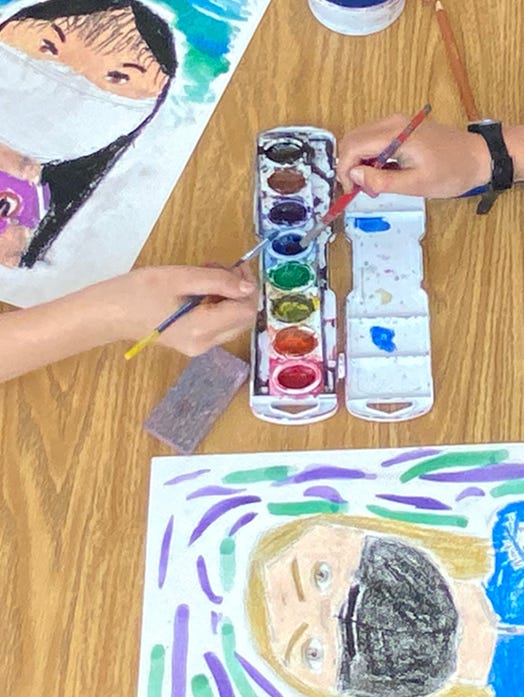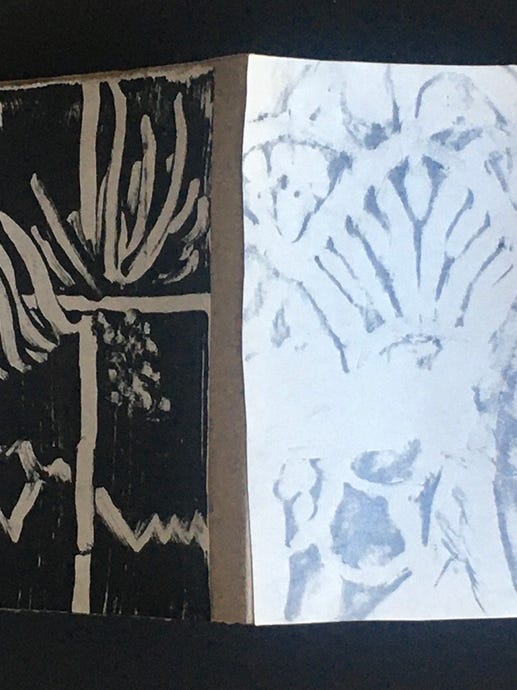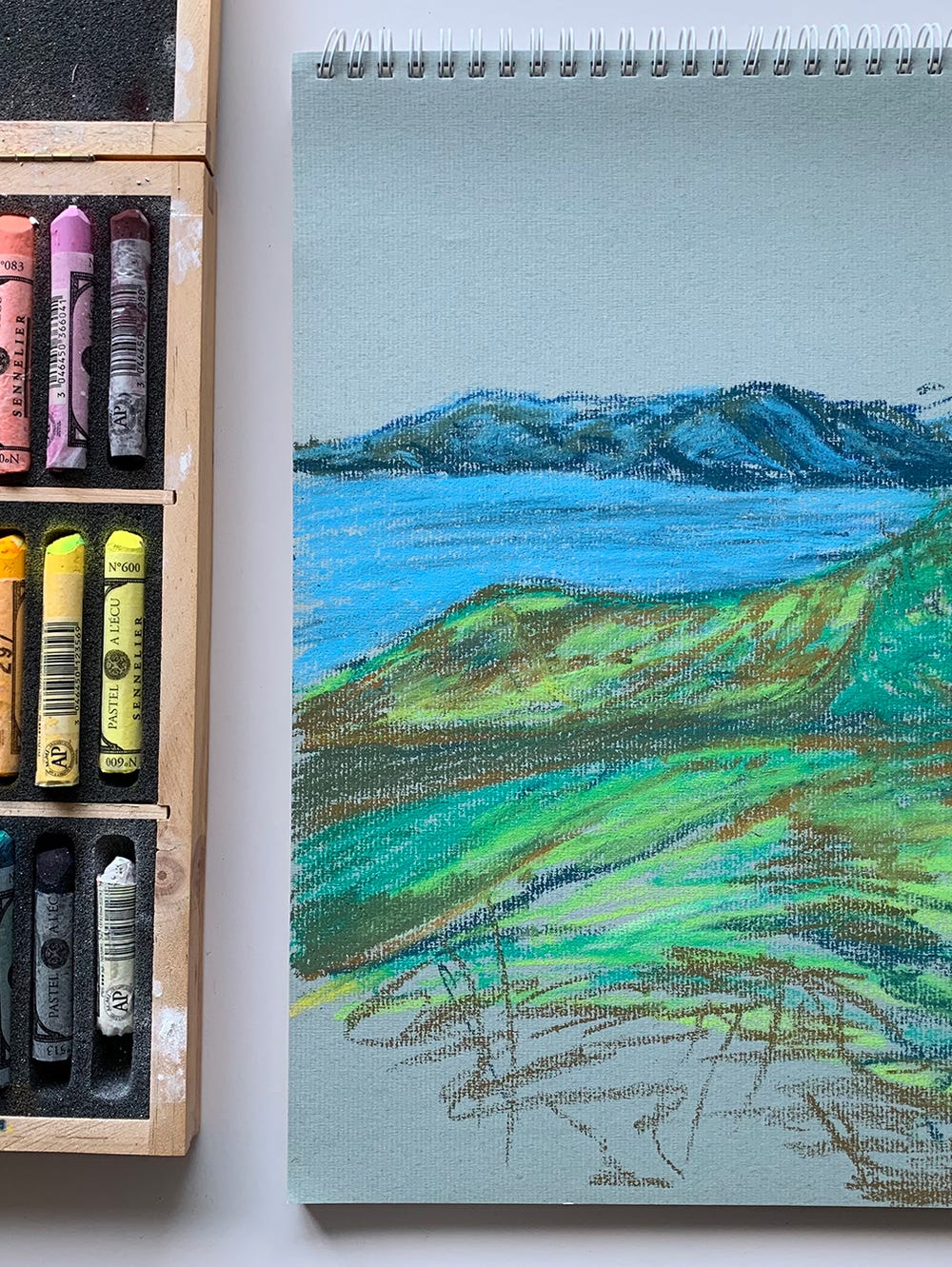de Youngsters Studio: Expressive Portrait Inspired by an Old Photograph
By Rea Lynn de Guzman, teaching artist
November 19, 2021
Create an expressive portrait using a photograph as a resource, inspired by artist Hung Liu. Learn about Liu’s work and art inspirations. Explore your own history and build further connections with your family by sharing stories and memories as you go through family photo albums together.
Materials
- An old childhood photograph (of yourself or a relative, preferably one that’s candid or mysterious)
- Watercolor paper
- Water cup
- Watercolor
- Cloth rag or paper towel
- Pencil, colored pencils, or charcoal
- Eraser
Questions to Consider
- Who is the subject of your portrait?
- Look at the facial expression of your subject. What emotions do you see?
- How can you create a meaningful and expressive portrait that evokes specific emotions?
- What story would you like to tell through your portrait?
Steps
Selecting a Resource Photograph
1. Look through a photo album with your family. Choose an older childhood photo of yourself or a relative that captures an important memory. Who would you like to honor and create a special portrait of? (Look for an interesting, mysterious, or candid photo, rather than a staged, formal one.)
Painting an Expressive Background with Watercolor Washes
2. Wet the watercolor paper slightly with water using a wide, flat brush.
3. Using a watercolor brush, apply watercolor on one side. Let it blend with the water on your paper.
4. Add more watercolor washes on different areas of your paper. Wet the specific area first, then add in drops of different colors using a round brush. Experiment with dropping in water as well using your round brush in a wet part of the paper. This creates a bloom - a very expressive look to your painting. Wait for your washes to dry before proceeding with the next step.
Drawing Your Portrait
5. Referring to your photo for inspiration, draw your subject in a very loose, gestural way. Start with some simple, curvy lines to form the shapes you see. Choose to draw the face and part of the body if preferred. Add in some details such as clothing or accessories.
6. Don’t worry about making it look exactly like the photograph. As the artist, you are transforming the image from the photo into a unique work of art. Focus on defining specific areas you are drawn to, such as the eyes and hair, and any objects you want to emphasize that can tell us more about your subject.
Reflect
After creating your portrait, consider the following questions:
- Tell us about your subject. Whose photograph did you make a portrait of? If you created a portrait of a relative, what did you learn about them? What memory did you capture?
- What characteristics or symbolism did you include into your portrait?
- What was your favorite part of the process and why?
Share
We would love to see what you create! Email pictures of your artwork to families@famsf.org or tag us on any social platform with #deyoungsters.
